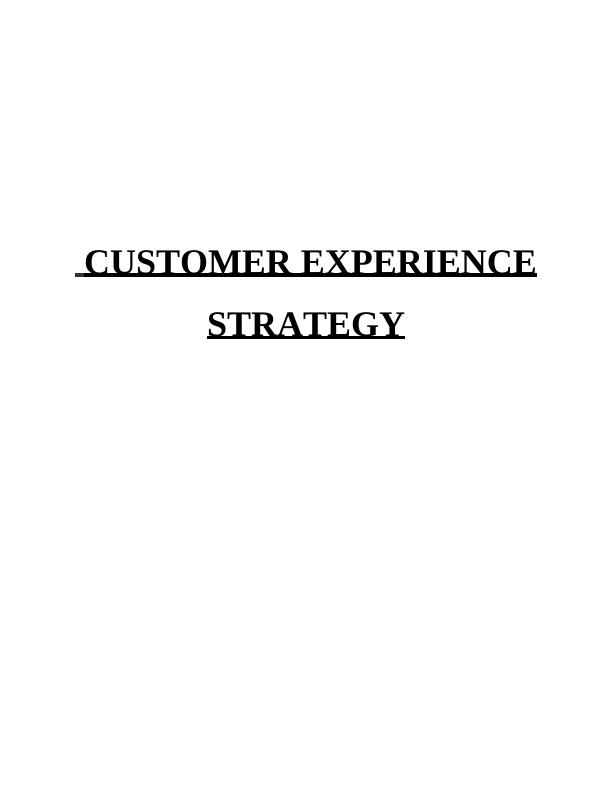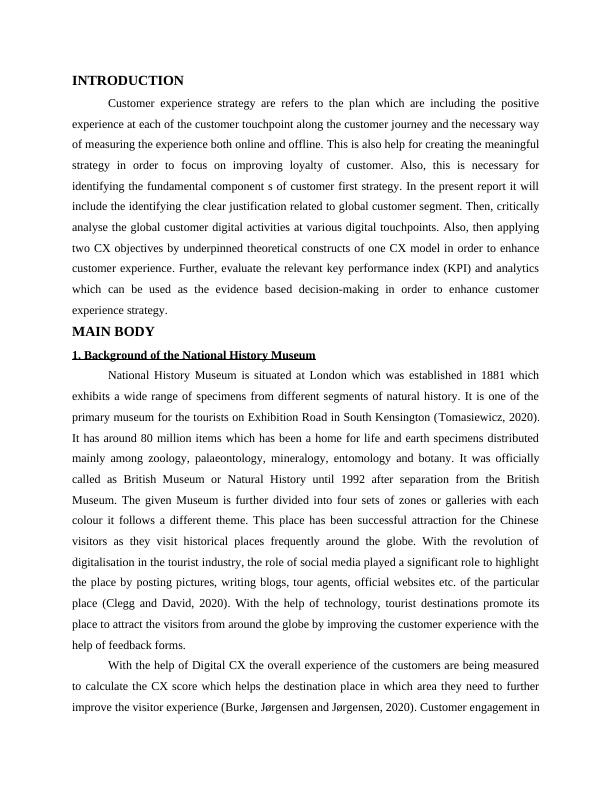Customer Experience Strategy for National History Museum
Assessment 1 and 2 for the Customer Experience Strategy module, involving a group presentation and an individual report, to be completed in Semester 1 and Semester 2 respectively.
11 Pages3973 Words224 Views
Added on 2023-06-08
About This Document
This report discusses the customer experience strategy for National History Museum, including customer persona, digital influence, and customer journey map stages. It also covers CX objectives, models, and strategies for enhancing customer experience. The report emphasizes the importance of social media and digital touchpoints in promoting the museum and improving customer experience.
Customer Experience Strategy for National History Museum
Assessment 1 and 2 for the Customer Experience Strategy module, involving a group presentation and an individual report, to be completed in Semester 1 and Semester 2 respectively.
Added on 2023-06-08
ShareRelated Documents
End of preview
Want to access all the pages? Upload your documents or become a member.
Customer Experience Strategy for Madame Tussauds: A Case Study
|13
|3706
|437
Customer Experience Strategy for Antique Theatre Plovdiv
|14
|4493
|198
Enhancing Consumer Experience Strategy for Disneyland Paris
|14
|4003
|465
Visitor Attraction Management Concepts | Report
|11
|3865
|135
Customer Experience Strategy for London Eye
|14
|4119
|93
Natural History Museum
|10
|2867
|60




